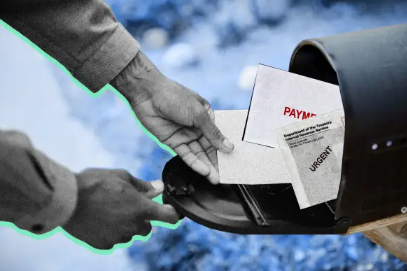Your Hillsborough Taxes, Explained (Finally): Part 1 - The Abbott Effect
INTRO
Property tax bills in Hillsborough keep climbing, and families feel it every spring. Parents want programs protected, homeowners want predictability, and everyone wants straight answers instead of finger-pointing. The frustration is palpable and, honestly, understandable.
If your mailbox feels heavier every year, it’s not your imagination. We’re being asked to pay more while the reasons - rising costs, state mandates, shifting aid - sound like noise. This problem only gets worse when the BOE and Township tell residents to “ask the other side.” Here’s the twist, though: this didn’t start at a Hillsborough meeting last summer. The roots run through a decades-long New Jersey court fight over what a “fair” education costs and who pays for it. Called Abbott v. Burke, that fight reshaped the state’s funding rules, the local tax cap, and importantly, the pressure on towns like ours.
This series starts by stripping away the noise. In today’s part 1 of “Your Taxes, Explained (Finally)”, we’ll explain how Abbott v. Burke set the ground rules, how the School Funding Reform Act turned those rules into a formula, and how that formula landed on your bill today. In short, Hillsborough’s tax hikes aren’t random, they’re the downstream result of statewide court rulings. Buckle up, because this story has been building for decades. And hey - you’re finally getting it explained.
Historical Background and Inequality
New Jersey has a long history of unequal school funding. Imagine two students: one in a wealthy suburb with well-stocked libraries, modern science labs, and small class sizes; the other in a poorer urban district with outdated textbooks, overcrowded classrooms, and limited access to advanced programs. That inequality wasn’t an accident. It was baked into the state’s system. For years before the 80s, the state gave more per-student funding to districts that could already afford it, leaving disadvantaged students struggling to get a “thorough and efficient” education, which the NJ Constitution guarantees.
Source: NJ Spotlight News | Link
The court case known as Abbott v. Burke challenged that imbalance, arguing that the state was failing its most vulnerable students. The Education Law Center (ELC), a nonprofit organization, has been at the forefront of this fight for decades. It sued the state of New Jersey in 1985, insisting that all students - regardless of ZIP code - deserve equal resources. Their work hasn’t just been about money, but rather about fairness, opportunity, and making sure the promise of public education goes beyond legal documents.
What Abbott v. Burke Mandates
Source: NJ Spotlight News | Link
Abbott v. Burke created a roadmap for what fairness looks like in practice. The court’s decisions weren’t vague. Through years of back-and-forth between the court and the state, they spelled out concrete requirements. Equal per-student funding was just the beginning. The court guaranteed preschool for at-risk 3- and 4-year-olds, mandated targeted academic programs, and launched one of the largest school construction programs in the country for low-wealth districts.
The rulings also established a critical principle: essential programs cannot be cut even if budgets get tight. That’s why when residents see potential program cuts, the board of education is stuck. They literally cannot violate court orders under any circumstances. Abbott’s mandates shaped the DNA of New Jersey’s education system: every funding decision must consider equity first, cost second. The intent was clear. Disadvantaged students deserve opportunities equal to those of wealthier peers, even if it makes budgets more complicated - or taxes higher.
The Funding Formula: SFRA vs Tax Caps
After 23 years of back-and-forth between the court and state, the School Funding Reform Act of 2008 was founded (also known as SFRA). This act was supposed to simplify things by calculating the real cost of a “thorough and efficient” education, then divide the bill between state aid and local taxes. On paper, this made sense. Each district would get what it needs, and everyone would pay their fair share.
Reality isn’t always neat though. New Jersey began enforcing a 2% cap on annual property tax increases in 2010. This meant that property taxes for a certain district could only increase by a maximum of 2% each year. When the state underfunds their portion of the SFRA, districts face a paradox: raise taxes beyond the cap (only allowed if you qualify for state incentive aid, more on that later), cut programs (which would violate Abbott orders), or find creative workarounds. It’s like being told you need to fill a bathtub with a tiny cup while the faucet drips. It’s frustrating, it’s slow, and it’s stressful. Hillsborough is caught in exactly this bind: residents want predictable taxes, but the formula and cap collide every year, creating tension and tough decisions.
Hillsborough Today
Hillsborough’s recent budget battles are the perfect case study of this paradox in action. The board has proposed significant local tax increases, in part to qualify for Tax Levy Incentive Aid - a program where the state matches local efforts (by a certain percent - often 10-20% of what the locals raise) to raise revenue beyond the cap. For the 2024-25 and 2025-26 school years, the board approved levy increases up to $22.9 million.
Source: Hillsborough Board of Education | Link
These increases haven’t gone unnoticed. Residents have filled BOE meetings to capacity, filed petitions, and taken debates online. The questions are constant: should we raise taxes to get matching state dollars, or risk cutting programs that Abbott v. Burke protects? There’s no easy answer, and the frustration is amplified because the state sometimes underfunds the formula, leaving local districts to juggle legal obligations with practical finances.
Why it Matters: Cause and Effect
Here’s the chain reaction in plain English: Abbott mandates adequate, equitable funding → SFRA calculates the total “adequacy” budget and splits costs between state and local sources → the 2% tax cap limits local flexibility → the state often underfunds SFRA → districts must either raise taxes (which Hillsborough, and other districts, do), cut programs (risking legal trouble), or appeal for additional aid.
Hillsborough’s recent tax hikes are a direct result of this tangled web. They’re not random, and they’re not simply the board “spending too much.” They’re the inevitable result of decades-long court rulings, formulas designed to ensure fairness, and legal protections that prevent cutting essential services. Why it’s targeting your bills in recent years instead of when the case started is because of how much of their SFRA portion the state actually pays. They pay different amounts each year, but the less they pay, the more the district has to struggle to fulfill the budget. Understanding that chain is key to understanding why your tax bill looks the way it does.







